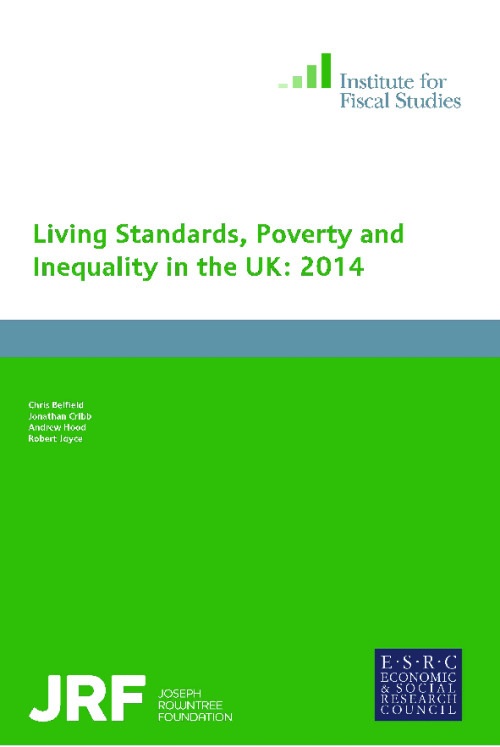How have household incomes evolved since the onset of the financial crisis? How has the gap between rich and poor changed? How have living standards changed over time for different parts of the population? How many people are in poverty and which groups are most likely to face poverty?
Each year, the government produces statistics about the distribution of income in the UK (‘Households Below Average Incomes’ or HBAI), which help answer these questions and many more. This report is the thirteenth in an annual series published by the Institute for Fiscal Studies that analyses these statistics and digs deeper to explore
the driving forces behind key trends in living standards, inequality and poverty.
Our first such report, in 2002, highlighted robust year-on-year growth in living standards and falling levels of poverty, while inequality was rising gradually. This latest report covers data up to and including 2012–13. The picture is strikingly different. Average incomes have just begun to stabilise after falling sharply in the aftermath of the Great Recession. Income inequality has fallen back to levels last seen one or two decades ago, depending on the measure. And whilst relative poverty has also been falling, this is only because the poverty line fell in line with average incomes. In absolute terms, the poor have become worse off in recent years – particularly when their housing costs are properly accounted for. Important new themes have emerged, including the falling-behind of young adults as they have struggled in the labour market and large differences in trends in the cost of housing across the population as mortgage interest rates have plummeted.
The main measure of income used in our analysis is net household income, which is ‘equivalised’ to take account of differences in household size and composition. We measure each household’s total income from all sources (including earnings, self-employment income, pensions, benefits and tax credits) minus income tax, National Insurance contributions and council tax. We then apply ‘equivalence scales’ to each household’s income, accounting for the fact that (for example) a net income of £200 per week will mean a higher standard of living for a single individual than it will for a couple with four children, all else equal.
Click here to access data on living standards, poverty and inequality since 1961 and to view our other annual reports on the topic.











